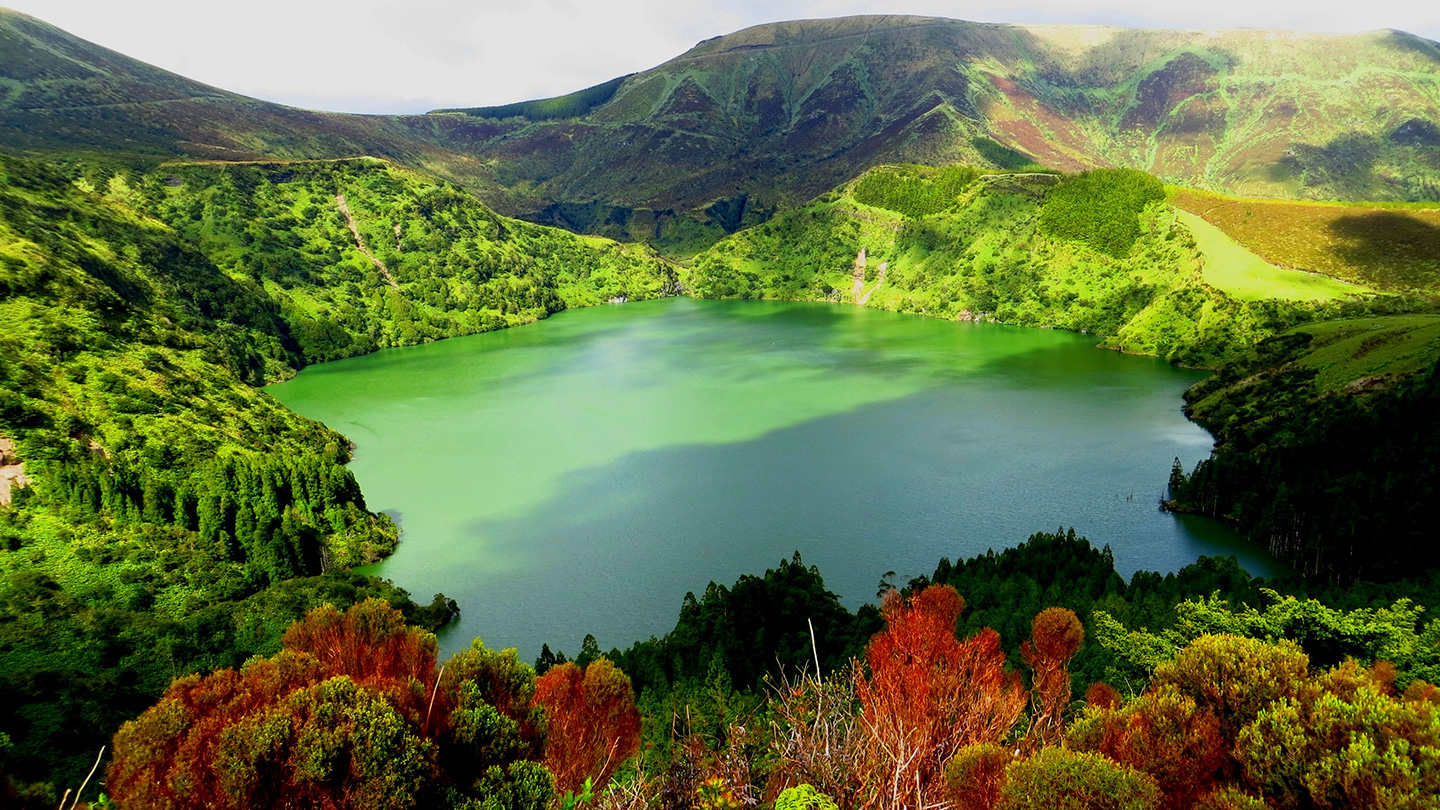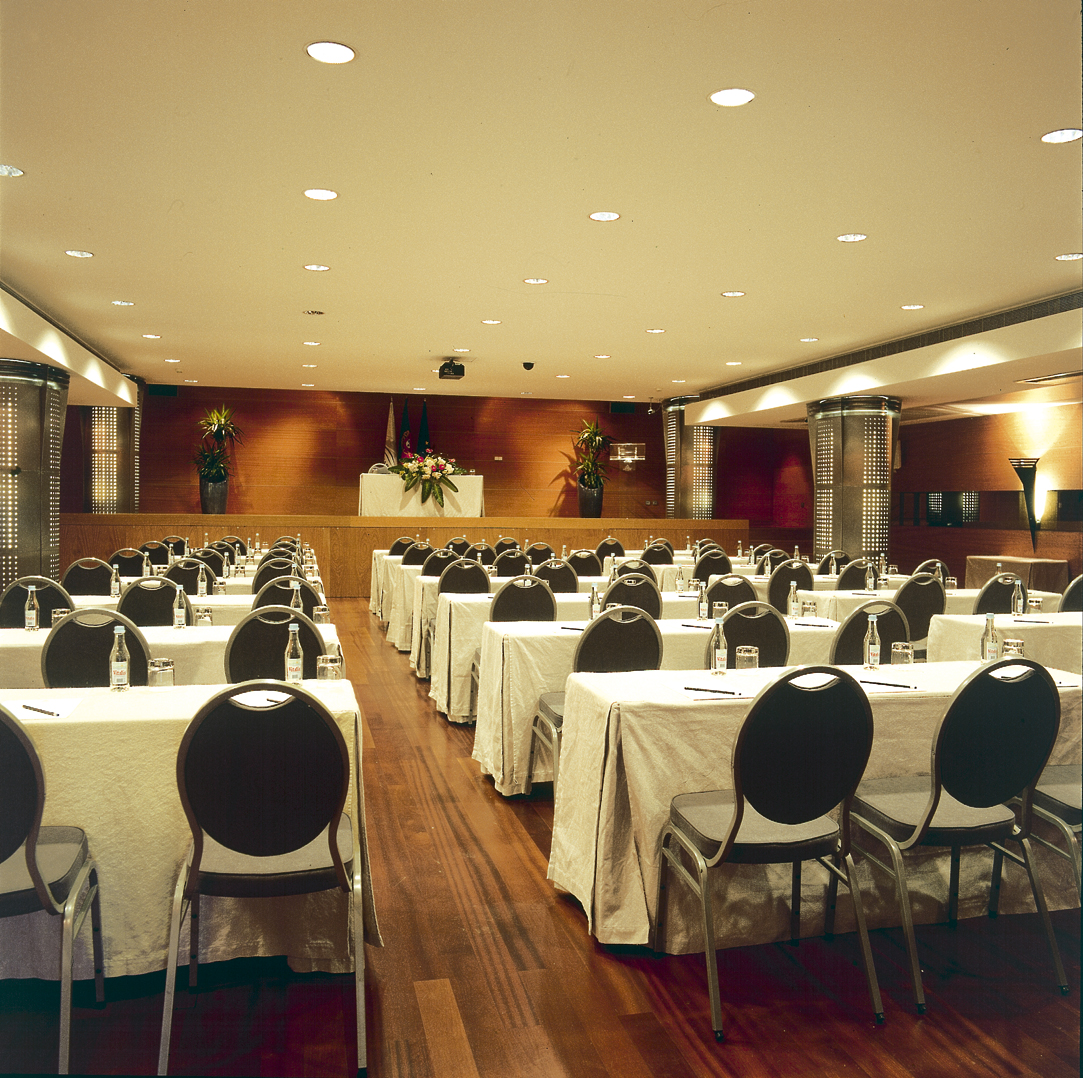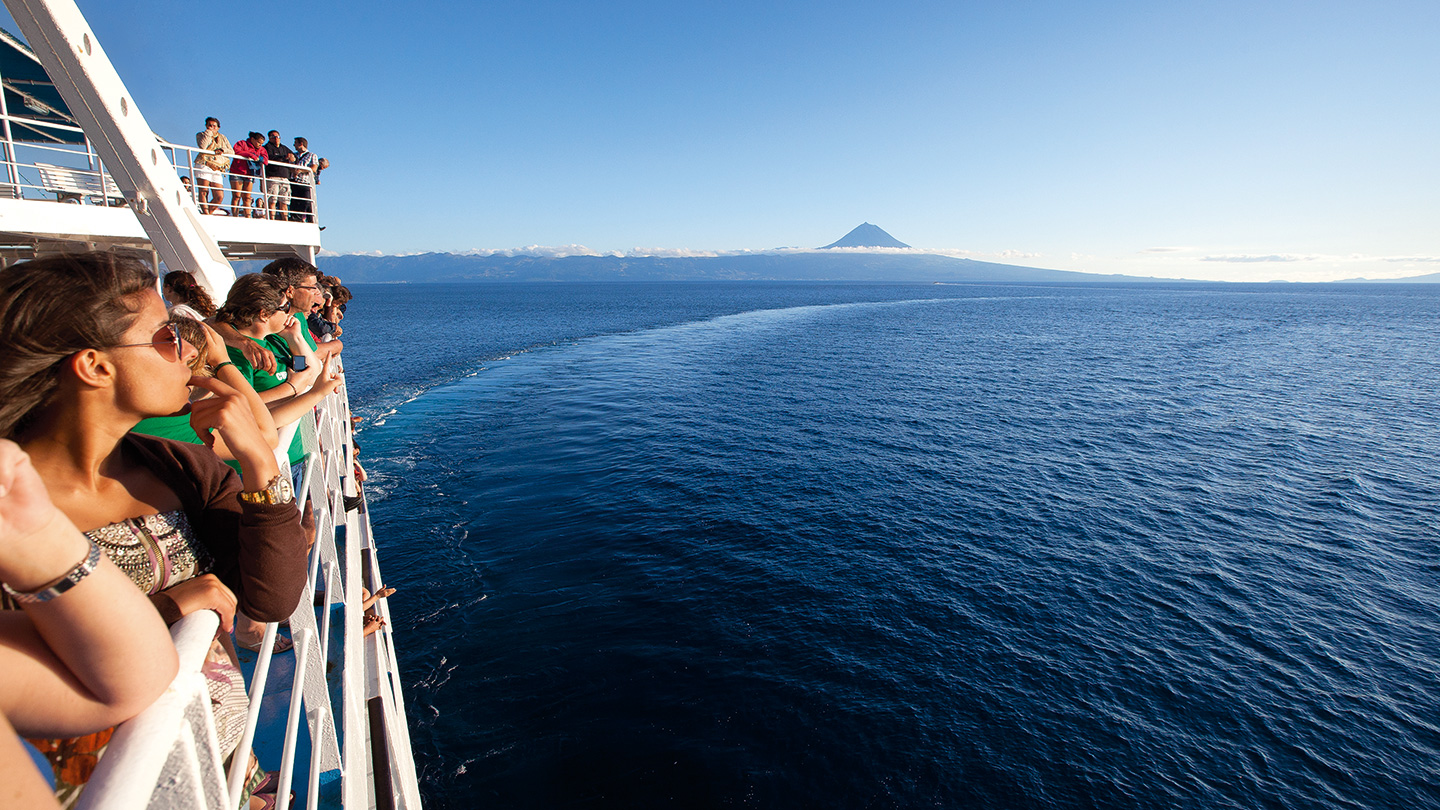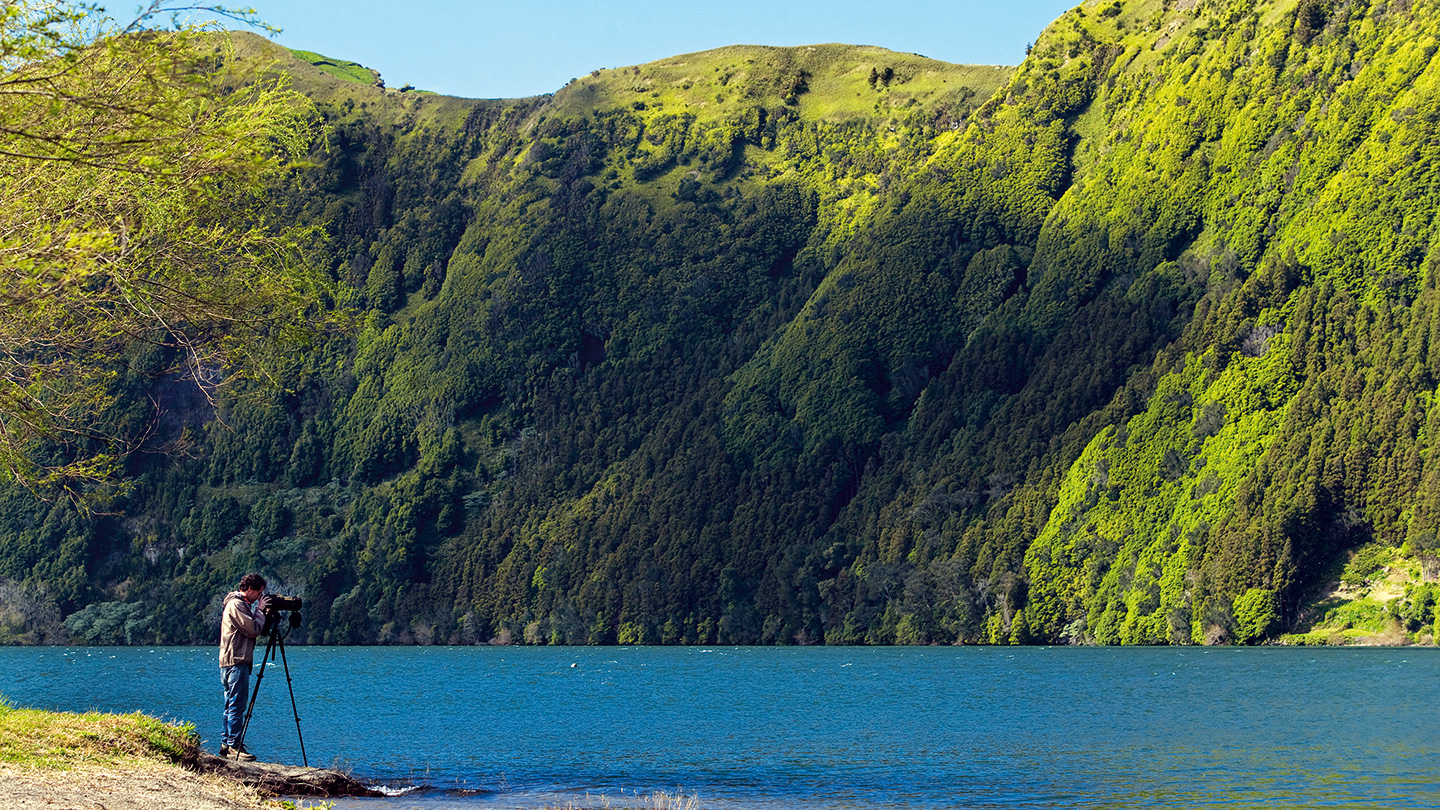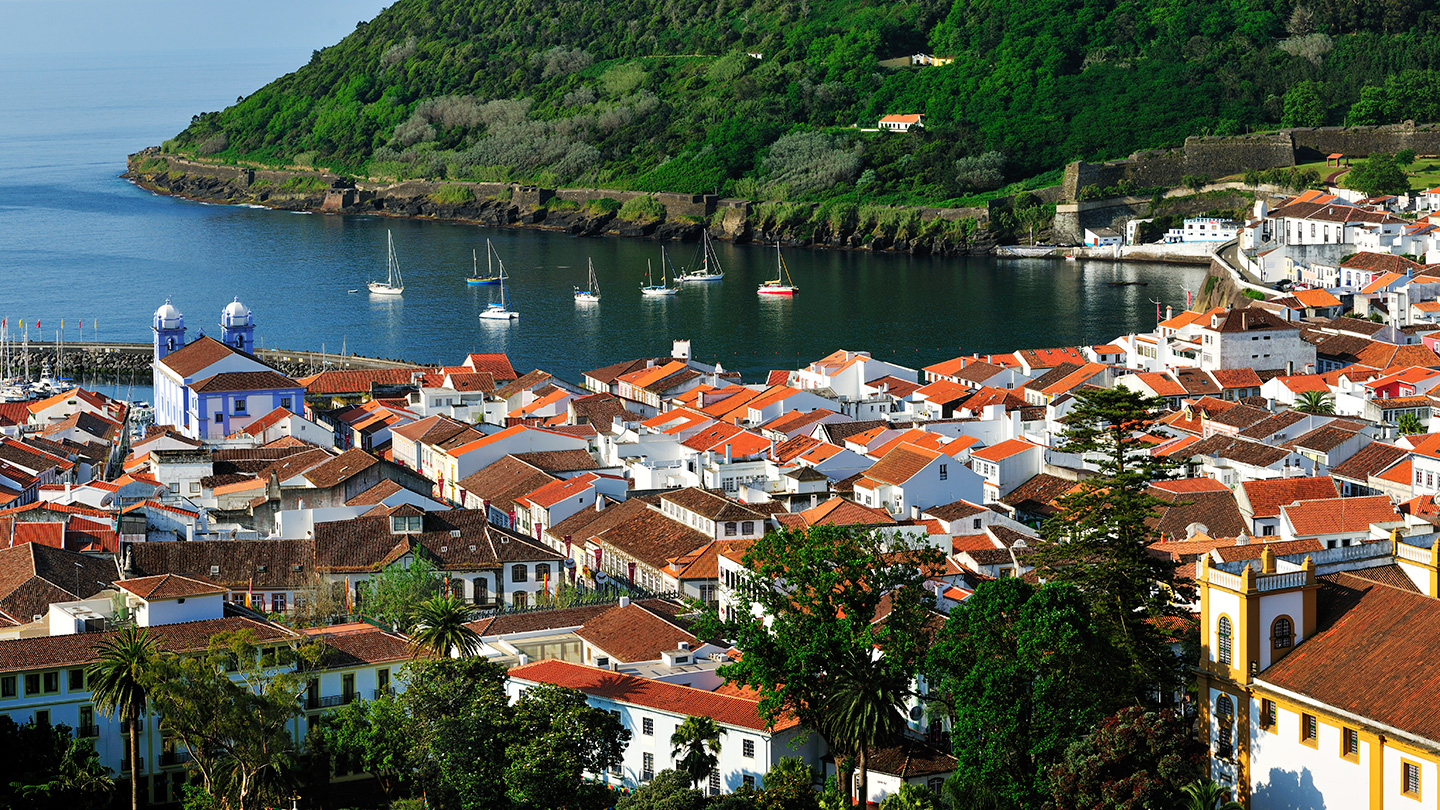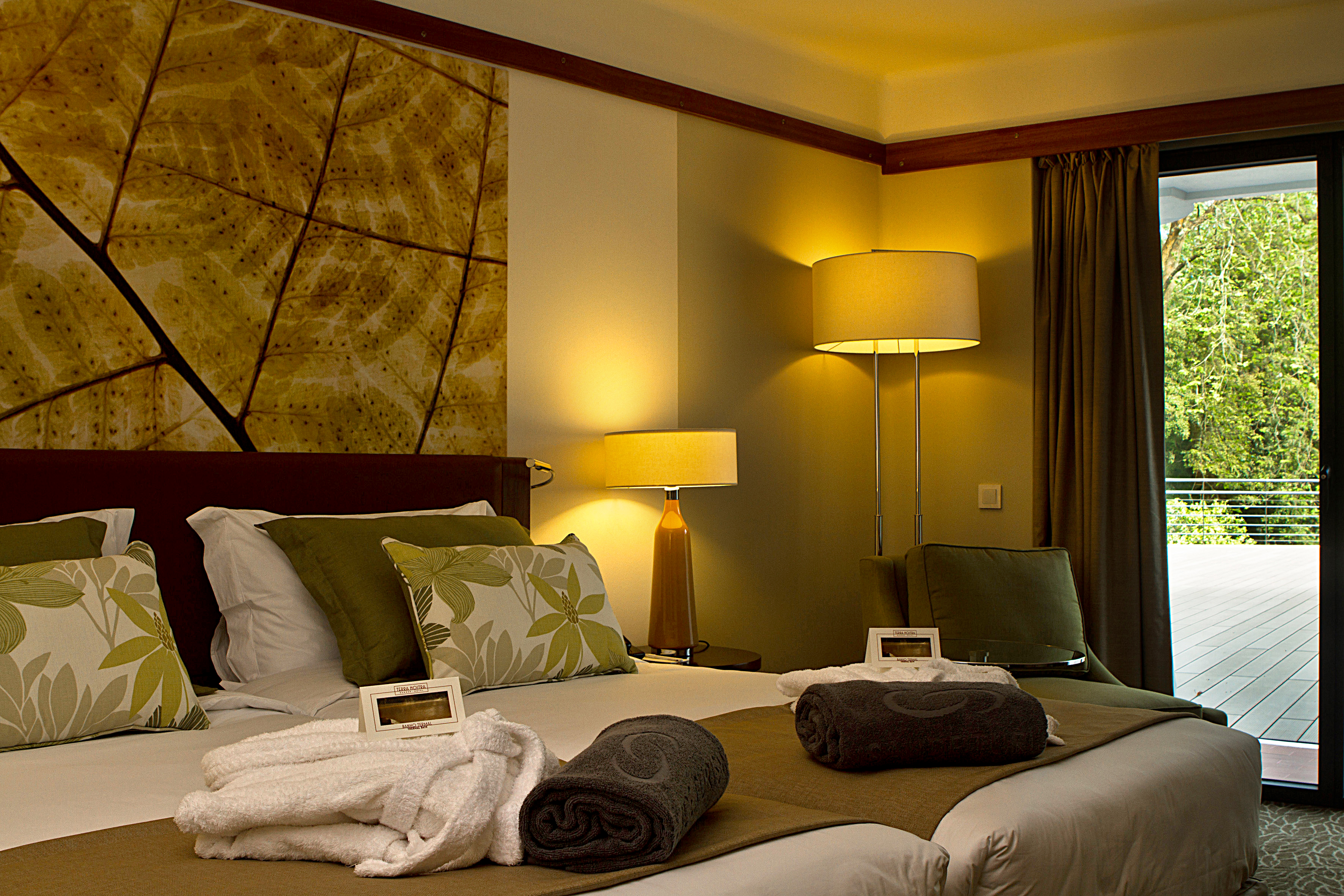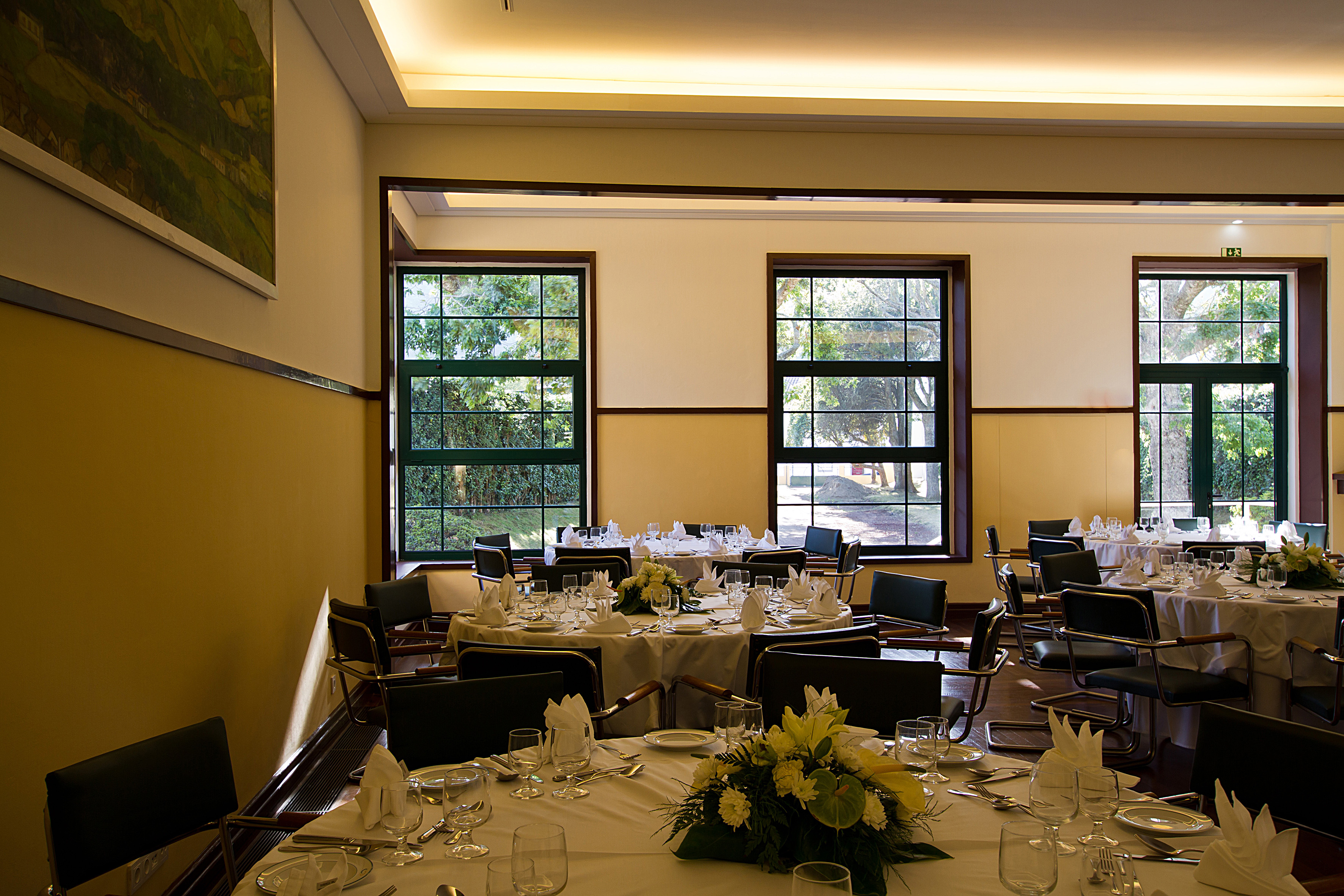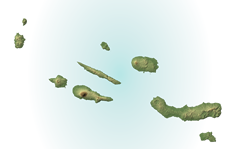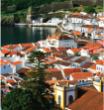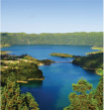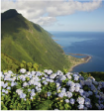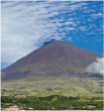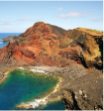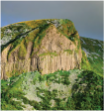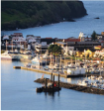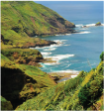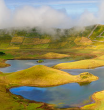São Miguel
The Green Island
The landscape of São Miguel is marked by two mountain areas separated by a low altitude platform. Nicknamed the Green Island, its landscape is made up of extensive fields and patches of tress that were forced into the valleys of streams and into difficult to reach areas. Cryptomeria stands out on the island’s productive forest land and reaches large dimensions in dense woods that are one of the most iconic images of São Miguel. The original flora still survives in small areas, with native and endemic species such as the Azores heather, faya, laurel and holly serving as a shelter for a very special bird, the Azores Bullfinch, and making up a palette of different shades of green spread out along the horizon.
Volcanic Landscape
São Miguel is a land of lakes nested in volcanic craters that are many kilometres wide. The most iconic one lies in Sete Cidades. This is a place filled with legends and myths, and it deserves to be seen from the Vista do Rei Lookout; from there, in noble contemplation, one can see two twin lakes, the Green and the Blue, paired together by a bridge. The ecstasy moves on to Lagoa do Fogo (Fire Lake), which has a wilder nature. A large lake surrounded by extravagant, lush vegetation stands out in the Furnas Valley , which lives up to its nickname of Vale Formoso (Beautiful Valley). But the number of lakes does not stop here, since others can be found both in the Serra Devassa and in the central part of the island, including the Canário, Santiago, Éguas and Congro Lakes... There will always certainly be another lake waiting to be discovered.
Rows of small volcanic cones and stretches of undulating green land abruptly come to an end in the blue of the sea. The lookouts of São Miguel are mostly filled with this type of view. Sometimes, one can see islets along the coast. Such is the case of the magnificent Vila Islet in front of Vila Franca do Campo or of the Mosteiros Islet, glorious at sunset even when it is seen from the distant Ponta do Escalvado. In Nordeste, with its exuberant vegetation, the lookouts are surrounded by gardens and equipped for barbeques whilst one enjoys the exceptional views. This is also the case of the Lomba do Cavaleiro Lookout, overlooking the whole caldera of Povoação and its seven slopes.
The natural hot water pools are one of the most attractive features that São Miguel has to offer. They have different formats. They are spectacular at Caldeira Velha, a fine stream of crystal clear water running thorough bright ochre trenches excavated in dark rock. They are majestic in the pool of the Terra Nostra Park, a lake of ferrous, brown water located in a luxuriant botanic garden. They are hidden at the Poça da Beija, a pool of crystal clear water and ferrous mud. They are quiet at the Caldeiras of Ribeira Grande, where the thermal building dating back to 1811 is surrounded by trees and fumaroles. They are effusive in the Furnas Valley , home of dozens of thermal springs, fumaroles and carbonated water which transform the valley into a Mecca in terms of spas and into a virtual bottling shop.
Coastline
High cliffs covered with green forests, black basalt headlands that penetrate the sea, promontories and sweet inlets, challenging fajãs [flat, low-lying strips of land on the coast], and numerous beaches with grey volcanic sand are some of the features of São Miguel’s coastline that deserve to be seen and visited with tranquillity.
On the southern coast, beaches such as Pópulo, Vinha da Areia and Ribeira Quente invite you for a swim and are sought after by many people. But if you prefer a more intimate contact with nature, the beaches of Amora, Viola, Lombo Gordo and Mosteiros among many others await you. Amid tips of black rock, sunbathing areas and crystal clear sea, one finds natural swimming pools and ponds in various places on the island; Capelas, Calhetas and Lagoa are just some of these sites. And at the Ponta da Ferraria, what icing on top of the cake, Mother Nature takes care of heating the seawater with volcanic hot springs, offering an Atlantic Thalassotherapy in a unique natural setting.
Between Povoação and Furnas, Nordeste and Água Retorta, and wherever the rugged terrain ends in towering coastal cliffs, there is an invitation to explore the trails that since times immemorial have connected the villages and houses located along the coastline.
Places to Visit

São Miguel is the biggest island of the archipelago, with 62.1 km in length and 15.8 km at its maximum width. More than half of the Azorean population (137.856 inhabitants in 2011) occupies an area of 744.7 sq. km. Together with Santa Maria, located 81 km away, São Miguel is part of the Eastern Group of the Azores Archipelago. With an altitude of 1,105 m, Pico da Vara is the island’s highest point located at 37°48’34’’ latitude north and 25°12’40’’ longitude west.

LAGOA DO FOGO: In the centre of São Miguel, descending via a carpet of soft turf to a beach of amazingly pale sand, a vast crater, flanked by the deep blue sea to the north and shimmering sea to the south, hides the long, oval Fogo Lake.

FURNAS: A universal spa centre, with a lake set amidst gardens and forests which remind one of fairy tales of genies and fairies, a huge array of flowers, water, mineral waters, spa waters, water recommended as a remedy for each and every complaint, water that rejuvenates one and comforts the soul.

NORDESTE: The Pico da Vara zone, in the north-east of the island, is the least known yet perhaps the least spoilt and most delightful, with its abundance of flowers.

VILA FRANCA ISLET: Situated near Vila Franca do Campo, about 1 kilometre from the coast, the islet is a nature reserve. During the summer season there is a regular boat service for those who wish to visit it.
The Green Island
The landscape of São Miguel is marked by two mountain areas separated by a low altitude platform. Nicknamed the Green Island, its landscape is made up of extensive fields and patches of tress that were forced into the valleys of streams and into difficult to reach areas. Cryptomeria stands out on the island’s productive forest land and reaches large dimensions in dense woods that are one of the most iconic images of São Miguel. The original flora still survives in small areas, with native and endemic species such as the Azores heather, faya, laurel and holly serving as a shelter for a very special bird, the Azores Bullfinch, and making up a palette of different shades of green spread out along the horizon.
Volcanic Landscape
São Miguel is a land of lakes nested in volcanic craters that are many kilometres wide. The most iconic one lies in Sete Cidades. This is a place filled with legends and myths, and it deserves to be seen from the Vista do Rei Lookout; from there, in noble contemplation, one can see two twin lakes, the Green and the Blue, paired together by a bridge. The ecstasy moves on to Lagoa do Fogo (Fire Lake), which has a wilder nature. A large lake surrounded by extravagant, lush vegetation stands out in the Furnas Valley , which lives up to its nickname of Vale Formoso (Beautiful Valley). But the number of lakes does not stop here, since others can be found both in the Serra Devassa and in the central part of the island, including the Canário, Santiago, Éguas and Congro Lakes... There will always certainly be another lake waiting to be discovered.
Rows of small volcanic cones and stretches of undulating green land abruptly come to an end in the blue of the sea. The lookouts of São Miguel are mostly filled with this type of view. Sometimes, one can see islets along the coast. Such is the case of the magnificent Vila Islet in front of Vila Franca do Campo or of the Mosteiros Islet, glorious at sunset even when it is seen from the distant Ponta do Escalvado. In Nordeste, with its exuberant vegetation, the lookouts are surrounded by gardens and equipped for barbeques whilst one enjoys the exceptional views. This is also the case of the Lomba do Cavaleiro Lookout, overlooking the whole caldera of Povoação and its seven slopes.
The natural hot water pools are one of the most attractive features that São Miguel has to offer. They have different formats. They are spectacular at Caldeira Velha, a fine stream of crystal clear water running thorough bright ochre trenches excavated in dark rock. They are majestic in the pool of the Terra Nostra Park, a lake of ferrous, brown water located in a luxuriant botanic garden. They are hidden at the Poça da Beija, a pool of crystal clear water and ferrous mud. They are quiet at the Caldeiras of Ribeira Grande, where the thermal building dating back to 1811 is surrounded by trees and fumaroles. They are effusive in the Furnas Valley , home of dozens of thermal springs, fumaroles and carbonated water which transform the valley into a Mecca in terms of spas and into a virtual bottling shop.
Coastline
High cliffs covered with green forests, black basalt headlands that penetrate the sea, promontories and sweet inlets, challenging fajãs [flat, low-lying strips of land on the coast], and numerous beaches with grey volcanic sand are some of the features of São Miguel’s coastline that deserve to be seen and visited with tranquillity.
On the southern coast, beaches such as Pópulo, Vinha da Areia and Ribeira Quente invite you for a swim and are sought after by many people. But if you prefer a more intimate contact with nature, the beaches of Amora, Viola, Lombo Gordo and Mosteiros among many others await you. Amid tips of black rock, sunbathing areas and crystal clear sea, one finds natural swimming pools and ponds in various places on the island; Capelas, Calhetas and Lagoa are just some of these sites. And at the Ponta da Ferraria, what icing on top of the cake, Mother Nature takes care of heating the seawater with volcanic hot springs, offering an Atlantic Thalassotherapy in a unique natural setting.
Between Povoação and Furnas, Nordeste and Água Retorta, and wherever the rugged terrain ends in towering coastal cliffs, there is an invitation to explore the trails that since times immemorial have connected the villages and houses located along the coastline.

São Miguel is the biggest island of the archipelago, with 62.1 km in length and 15.8 km at its maximum width. More than half of the Azorean population (137.856 inhabitants in 2011) occupies an area of 744.7 sq. km. Together with Santa Maria, located 81 km away, São Miguel is part of the Eastern Group of the Azores Archipelago. With an altitude of 1,105 m, Pico da Vara is the island’s highest point located at 37°48’34’’ latitude north and 25°12’40’’ longitude west.

LAGOA DO FOGO: In the centre of São Miguel, descending via a carpet of soft turf to a beach of amazingly pale sand, a vast crater, flanked by the deep blue sea to the north and shimmering sea to the south, hides the long, oval Fogo Lake.

FURNAS: A universal spa centre, with a lake set amidst gardens and forests which remind one of fairy tales of genies and fairies, a huge array of flowers, water, mineral waters, spa waters, water recommended as a remedy for each and every complaint, water that rejuvenates one and comforts the soul.

NORDESTE: The Pico da Vara zone, in the north-east of the island, is the least known yet perhaps the least spoilt and most delightful, with its abundance of flowers.

VILA FRANCA ISLET: Situated near Vila Franca do Campo, about 1 kilometre from the coast, the islet is a nature reserve. During the summer season there is a regular boat service for those who wish to visit it.
